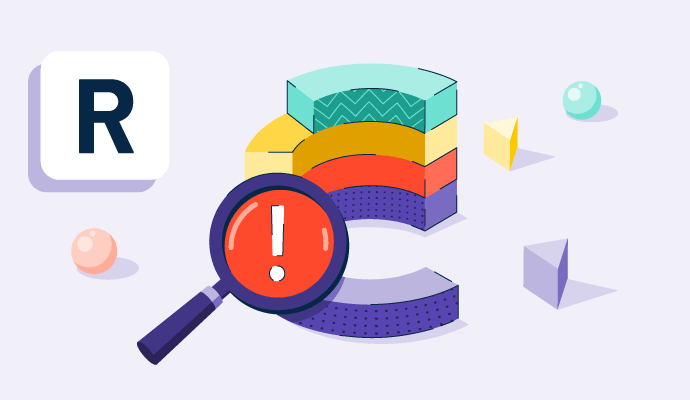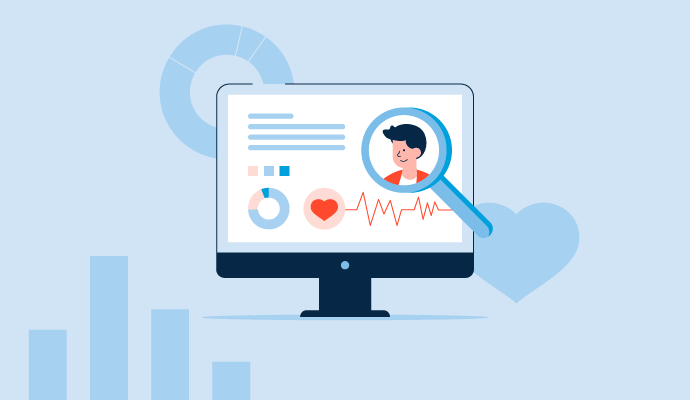What is risk identification?
Risk identification is a method for detecting and recording possible risks to business assets or systems. Anything that could negatively affect business performance or cause damage or loss is noted in an attempt to reduce the real-life impact of these risks.
Risk identification pinpoints possible causes of risk before they take place to help companies plan ahead for anything that could stop them from meeting their goals. This typically focuses on large scale issues such as data breaches and hacking, lawsuits, theft, or economic downturns.
Companies use business activity monitoring software to find instant insight into the status of their key performance indicators (KPIs). These kinds of platforms also help teams stay alert for potential issues.
Types of risk identification
Depending on the type of asset businesses plan to evaluate, they may have many possible ways to identify risks. Common techniques are:
- Stakeholder interviews. Some of the most important people to talk to when assessing risk are those who have invested heavily in a project or company. It’s critical that internal teams understand the stakeholders’ perception of risk, especially as they likely conducted their own risk identification prior to making their investment.
- Team brainstorming. Discussing risks with the wider team is a good starting point for determining what could affect a specific project or goal. Brainstorming gives teams the opportunity to meet and analyze potential risks together from different viewpoints, not just leadership.
- Affinity diagrams. Grouping data into similar categories means that teams can see where the biggest areas of risk are in order to prioritize their solutions. For instance, financial risks could be grouped together, but safety concerns may fall under a different category that is more easily resolved.
- Root cause analysis. Looking back over previous projects is a helpful way to identify potential issues with a new project. Teams can also take the opportunity to see if any equipment from an old project could be reused for the current one.
- SWOT analysis. Companies should do strengths, weaknesses, opportunities, and threat analysis at least once a year, especially before starting a new project. A thorough SWOT analysis is beneficial for many reasons, not just risk identification. Investors want to see this report before handing over money, and internal teams can better understand a project’s scope and issues before it begins.
Basic elements of risk identification
Risk identification is the first step in ongoing risk management, but it also has a life cycle of its own that must feature several key components.
- Risk statement. To begin, all perceived risks must be documented. The risk statement should outline what might happen, what is currently happening, when the risk may be occurring, and how much it could affect business objectives.
- Identification. Both basic and detailed identification help build out a full picture of what the risks are. SWOT analysis can factor into this stage before moving into more detailed brainstorming.
- Cross-checking. Any checklists or documentation the company already has about its assets should be cross-referenced with the perceived risks outlined. Teams should also research industry standards at this stage to determine whether the possible risks they find are normal.
Benefits of risk identification
Knowing what may come up in a project or when a new asset is acquired is the main goal of risk identification. Some of the benefits of going through this process are:
- Discovering possible negative outcomes ahead of time. Preparing teams and stakeholders to face potential negative results gives everyone the opportunity to correct mistakes before they happen while also balancing investments in a more informed way.
- Understanding business vulnerabilities. All businesses have weak spots. Knowing where they are means that internal teams can correct issues that arise in areas like cybersecurity, financial security, or safety before damage is done.
- Making more strategic choices. Teams can save time and money when making informed, data-driven choices while working on a project. Identifying risks upfront provides a deeper understanding of where possible errors could occur, and investments can be made in building solutions ahead of the problem arising.
Best practices for risk identification
Whether a company is new to risk identification or working on an ongoing assessment, some of the best practices to adopt are:
- Employee accountability. From the administrative department to leadership, everyone on the team should be thinking about risks in their daily tasks. Incorporating risk management into company culture means that everyone is working together to manage potential negative impact.
- Risk prioritization. Not every risk will be as important as others, so it’s vital that teams can prioritize which to deal with first and most frequently. The data gathered here will make that decision.
- Continual review. Risk identification is never a once-and-done process; it should be part of the company’s regular maintenance. Reviewing the same risks over time and also looking for new ones is an important part of risk management for the business as a whole, not just individual projects.
Manage third-party vendors more effectively and assess the risks to your business with third-party and supplier risk management software.

Holly Landis
Holly Landis is a freelance writer for G2. She also specializes in being a digital marketing consultant, focusing in on-page SEO, copy, and content writing. She works with SMEs and creative businesses that want to be more intentional with their digital strategies and grow organically on channels they own. As a Brit now living in the USA, you'll usually find her drinking copious amounts of tea in her cherished Anne Boleyn mug while watching endless reruns of Parks and Rec.

